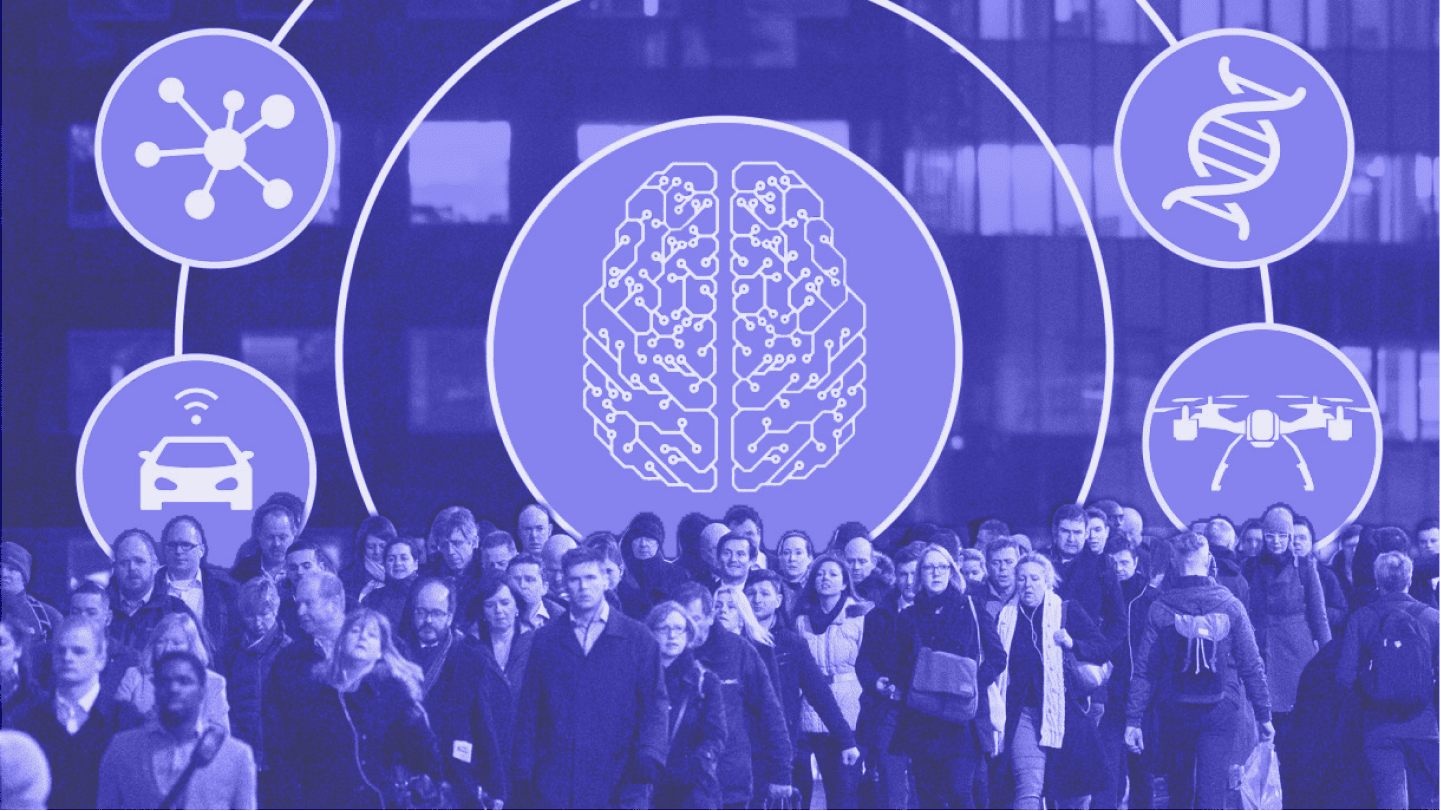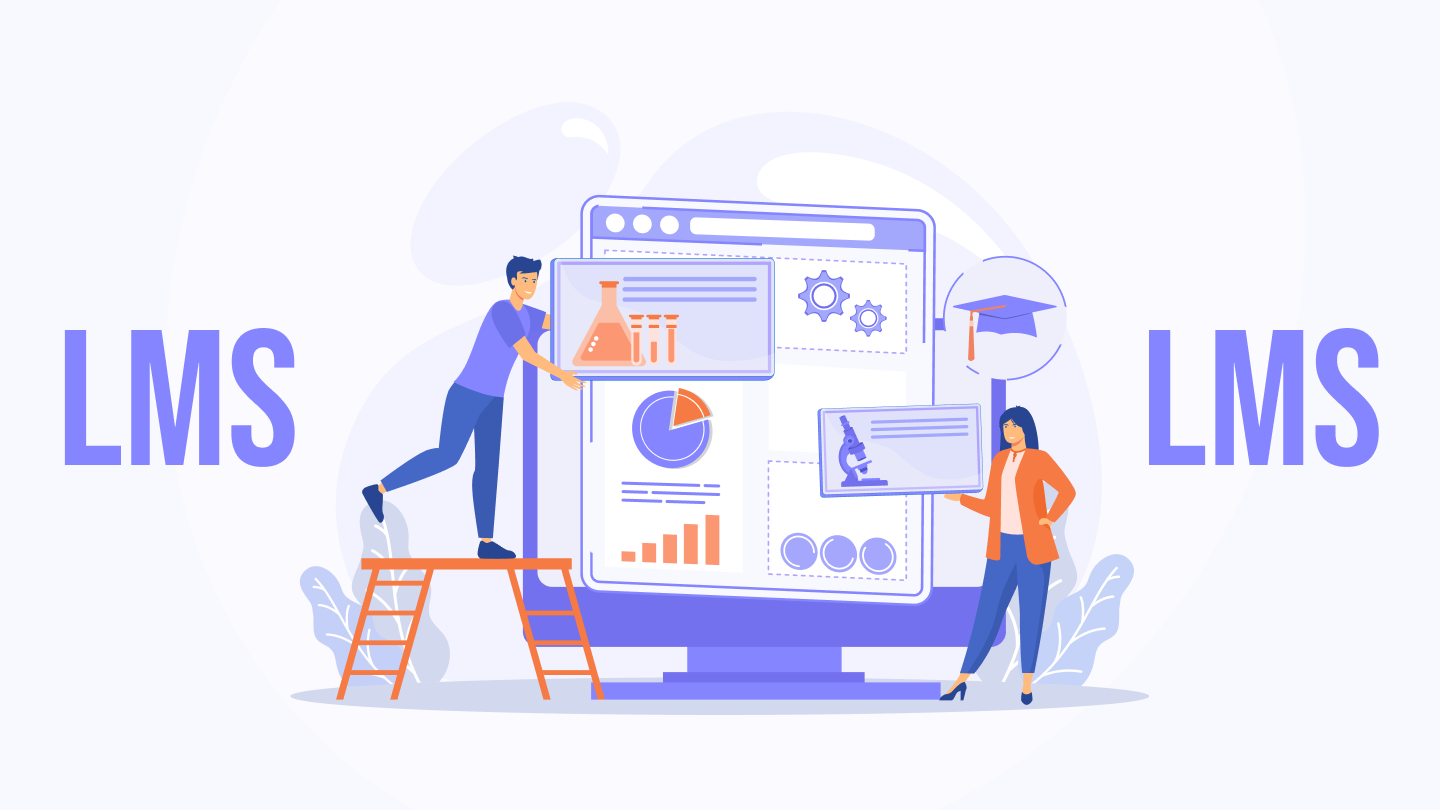Project management has always been key to successfully delivering complex projects with lots of moving parts, especially with workforces evermore manned by remote workers who might live at opposite ends of the planet.
That’s why we have seen so many project management tools hit the market in recent years. However, the tool is not a skill. Thinking that having access to the right tools means you can neglect the project management methodologies would be inaccurate.
So, here we are, ready to take a deep dive into the potential-filled world of project management. If you already have an interest in project management, then you’ll have run into the Agile vs. Waterfall vs. Scrum vs. Kanban conundrum!
When deciding on an approach, it’s easy to become lost in the weeds. So, we’ll make sense of this mess for you.
In this post:
What Is an Agile Approach?

The Agile approach is the go-to for software developers. With Agile, workflows are adaptive and run parallel with each other. This works great in projects where the brief can change, and multiple programmers are working on separate, interrelated tasks.
How Agile Works
The Agile methodology works by splitting projects into increments called sprints, with each sprint including a planning, development, and testing stage. Agile is collaborative and involves identifying a “product backlog” of tasks to be completed in each “sprint.” These are assigned and managed in a project management tool.
The best way of understanding Agile is by comparing it to Waterfall. When deciding on Agile vs. Waterfall, what you are really deciding is whether your project would be better split into tasks that need to be completed sequentially (Waterfall) or whether some can be completed at the same time (Agile).
To simplify things further, project managers often worry over the issue of Agile vs. Waterfall vs. Scrum vs. Kanban, but in actuality, the latter two can be seen as a part of Agile, but more on this in a moment.
Top-notch apps: how to build them?
Do you want your app to hit the market? Make sure that your business analysis is genuinely good
Pros of Agile
- Much more adaptable to change.
- The ultimate goal can change without breaking the project flow.
- Delivery is generally faster than Waterfall because tasks can be completed in parallel.
- Teams are collaborative, not siloed, so there is an opportunity to have more eyes on a task, which promotes more effective problem-solving.
Cons of Agile
- There is a chance of projects losing direction as the end goal may not be clear.
- Agile is way more complex and, therefore, more difficult to manage. Project managers will need project management tools to deliver complex jobs.
- As the tasks in a sprint are subject to change and the end goal is moveable, Agile methodologies can fall victim to scope creep. That’s when the project grows beyond the original scope, eating into budgets.
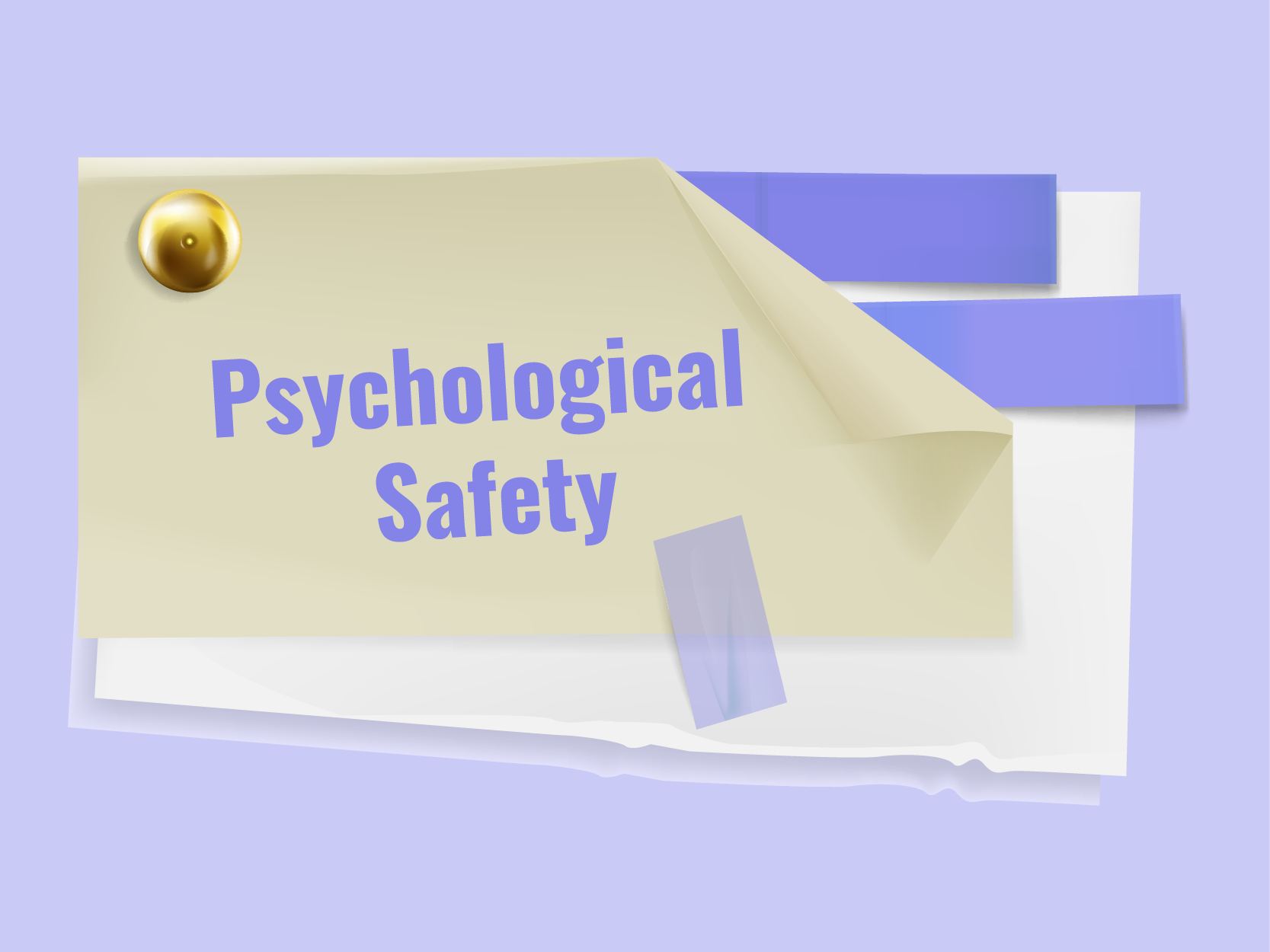
Hot topic
Agile Psychological Safety
In this article, we will tell you how to build psychological safety in Agile teams.
I'm on itWhat Is the Scrum Method?

Scrum is designed to get work done faster, making it an incredibly popular choice for teams that are always under pressure to get more done in less time.
How Scrum Works
Scrum is an off branch of Agile, but it is much better defined.
With this method, a Scrum master acts as a link to the project owner, plans the sprints, and identifies and removes any roadblocks. Sprints are generally scheduled in two-week blocks and are reviewed at the end of the period.
If you compare Scrum vs. Kanban, the first is more commonly used for process improvements, whereas the latter is all about speed!
Pros of Scrum
- Daily meetings mean total team and project visibility.
- The Scrum master is a team member, not a project leader, which encourages accountability.
- Short sprints mean the project can pivot with changes.
Cons of Scrum
- Scope creep.
- The team needs to be made up of senior people who don’t require regular feedback and encouragement.
- If the Scrum master does not define the tasks well, then the outcomes will be substandard.
Scrum Master's Guide: All You Need To Know In Simple Terms
Why people tend to avoid scrum, which misconceptions are popular, and common mistakes scrum masters and product owners make.
What Is Kanban?

Kanban is all about process improvements. As a version of an Agile strategy, it shares all of the pros and cons associated with that method. However, there are some key differences.
How Kanban Works
Kanban works by using boards to organize tasks into cards and lists. Each list has a limit on what tasks can be added to it; this is called a WIP limit. So, there is some fluidity, but you can get bottlenecks.
Pros of Kanban
- Intuitive approach that people can generally understand at a glance.
- Like all Agile approaches, it is adaptable to change.
- Teams are encouraged to collaborate to avoid bottlenecks.
- It is possible to identify bottlenecks easily and other areas of the project that can be improved.
Cons of Kanban
- It does not work if you are working on your own.
- If new elements of the project are introduced, it is difficult to fit them into a well-structured Kanban strategy.
- Traditionally, there are no fixed timelines.
What Is the Waterfall Method?

Waterfall is seen as a dated approach to project management, but there are still lots of situations in which this approach is a safer, more reliable approach than Agile. With Waterfall, the available budget can be carefully controlled from the offset, and each stage of the waterfall can be carefully managed by a project manager.
This is appealing when working with a client who is inflexible.
How Waterfall Works
Waterfall is a straightforward methodology. Each step of a project is set out linearly, with each step reliant on its predecessor.
This works great with projects that have a well-defined budget, deadline, and scope.
This method is used more for projects with no 100% design changes or goals because there are no intermediate stages where the result can be measured; this is definitely not for startups.
Pros of Waterfall
- Waterfall is by far the easiest to manage.
- Team members have less accountability, so it’s possible to impose a tight discipline.
- With Agile, multiple moving parts make the documentation process much more unwieldy, but with Waterfall, documentation is easily achievable.
Cons of Waterfall
- It’s very difficult to go backward with Waterfall without increasing costs and pushing the deadline out.
- On complex projects such as software development, the achievable delivery dates with Waterfall are not reasonable.
- You need accurate outcomes and requirements to implement a functional waterfall strategy, and that is often not possible.

More on topic
Cooperation models in IT
Time and Material, Dedicated team, Outstaffing... Still sounds mysterious? Find out the difference in our article.
Tell me moreComparison of Project Management Methodologies
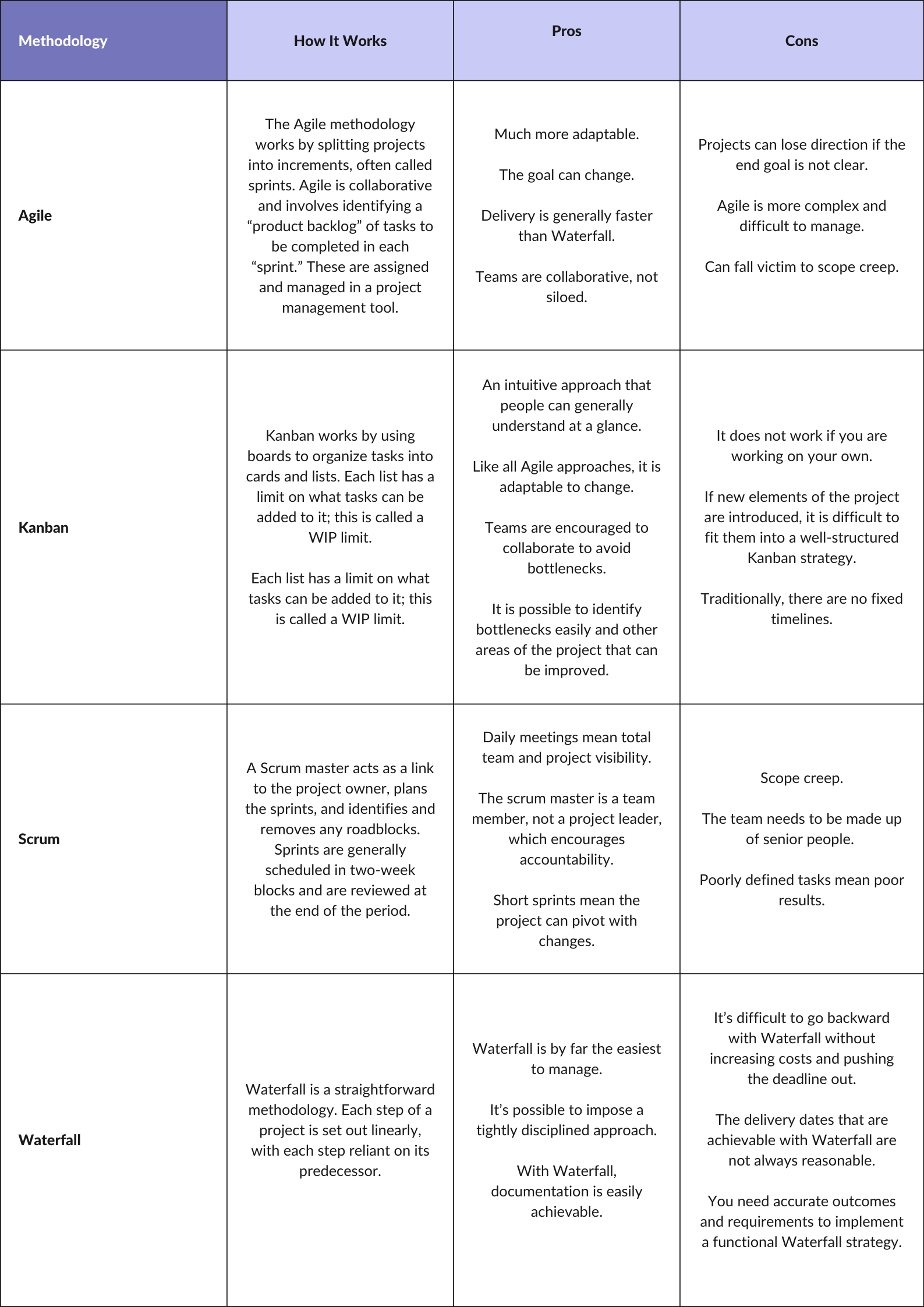
How to Choose the Right Project Management Methodology
The reality is that the best approach depends on the project. If you have a clear deadline, straightforward project, and inflexible budget, then the Waterfall approach may suit your needs perfectly. However, whatever the situation, it is hard to discount the potential cost savings achievable when multiple team members are working in sprints, as with Agile.
There is another consideration. If you are working with the same team long-term, there is something to be said for picking an approach and sticking with it. If your team becomes veteran Scrum users, this approach may outperform Kanban, even if it is the more obvious choice.
This is even true of Waterfall. Even though Waterfall is seen as a little 20th century, if you are a Waterfall expert, you can implement a strategy that would outstrip a fledgling Scrum team.
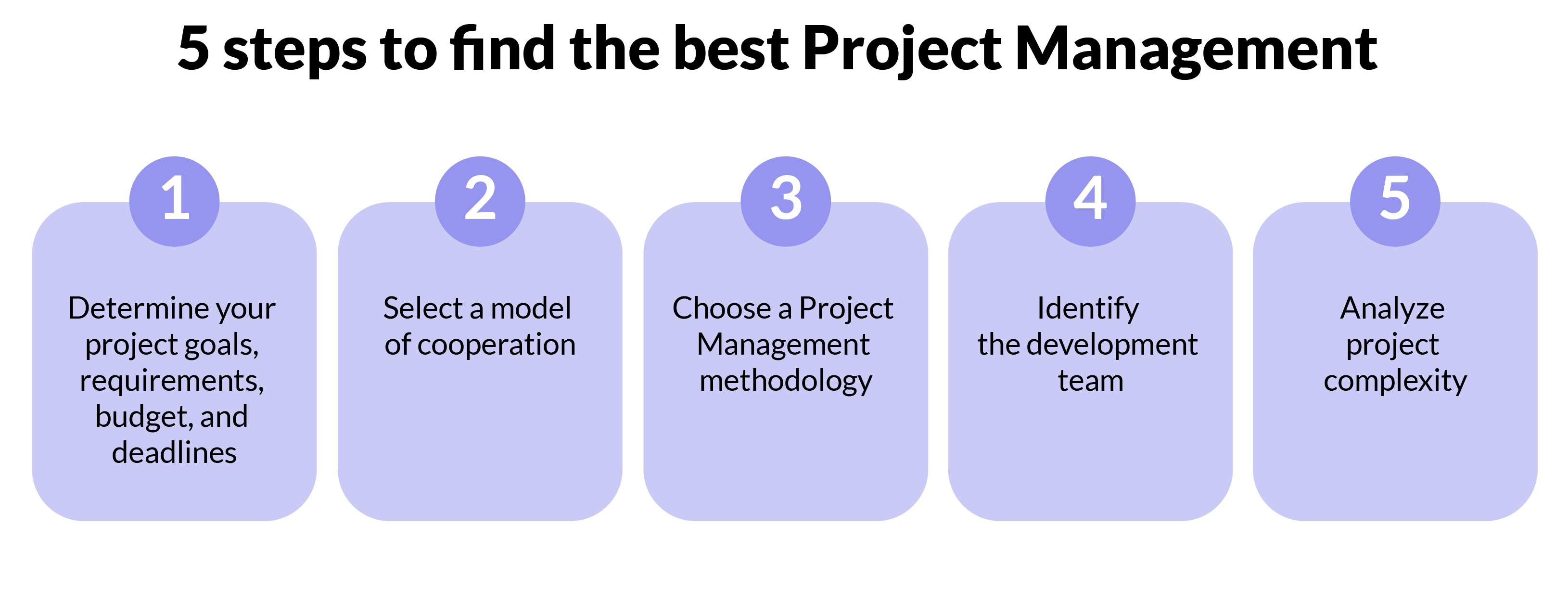
Still Undecided?
If you are still undecided on the Agile vs. Waterfall vs. Scrum vs. Kanban conundrum, then think of it this way:
- If your client or project calls for strict rules, inflexible, though generous, deadlines and budgets, then Waterfall is a safe choice.
- If you thrive in a flexible, fast-paced work environment, and have a competent, resourceful team, then Agile is the way forward.
- If you are going with an Agile approach, you should pick a sub-strategy to suit your project. If your project calls for fluidity, then Scrum is your best bet; if you need the visual benefits of boards, then go with Kanban!



